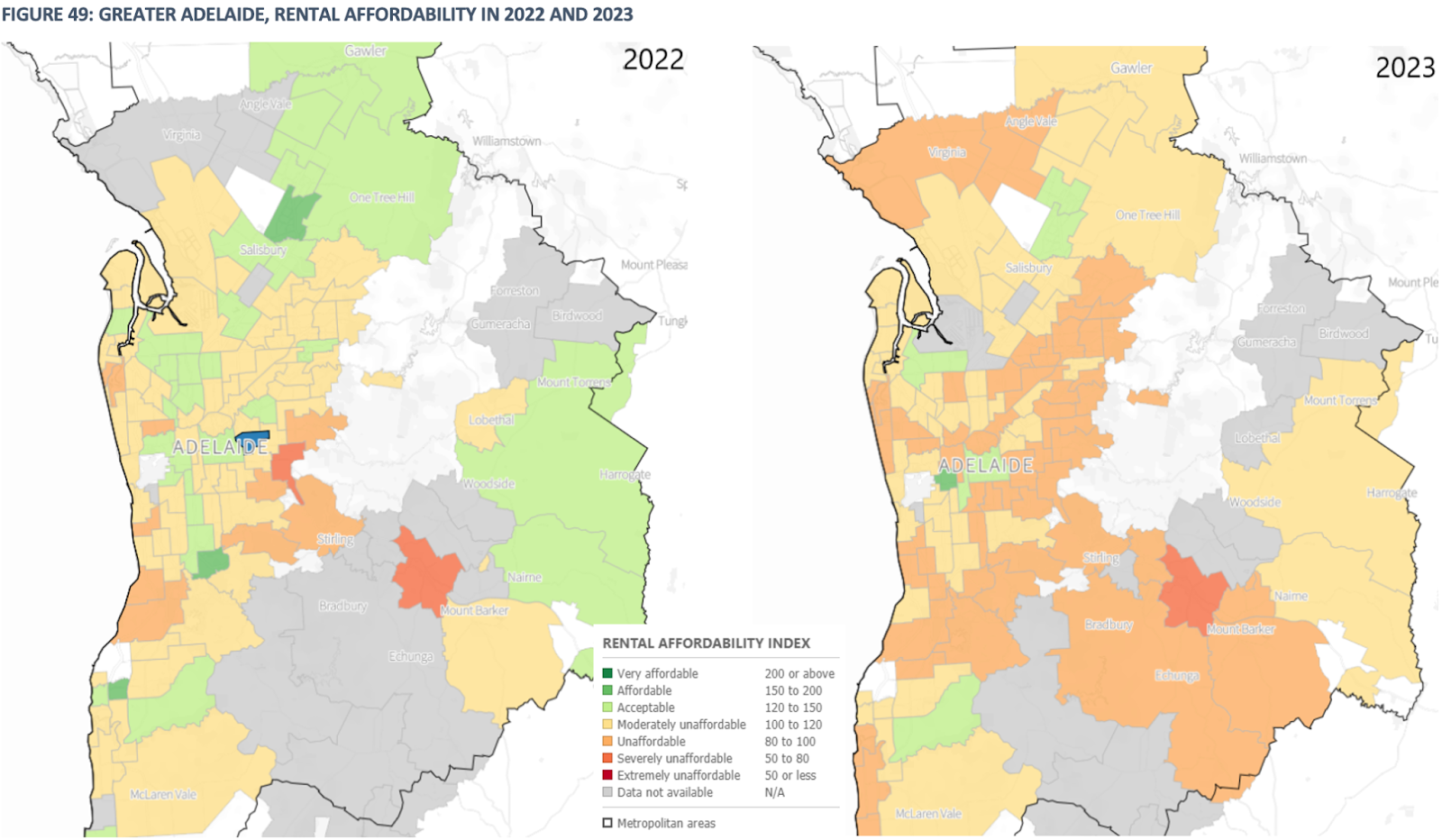The latest National Shelter and SGS Economics and Planning analysis shows low-income renters are bearing the brunt of Adelaide's rental affordability crisis, which is at its worst point since 2013.
Low-income households are bearing the brunt of the decreases to affordability and for people who are single and on Jobseeker, the Age Pension or even working as a single parent, rents are classed as 'unaffordable' or 'severely unaffordable'. People simply cannot afford to rent any more on these inadequate income support payments.
The average metropolitan rental household, earning $87,000 a year, would struggle to find an affordable rental in the private market, and faces paying 27 per cent of their income if renting at the median rate. What was previously deemed 'affordable' in the corridor from the southern suburb of Bellevue Heights to Gillman in the north has completely disappeared since 2022. Renters now have to look at least 30km from the CBD to find something more affordable.
Dr Alice Clark, CEO Shelter SA, said:
"What's happening in Adelaide shows that Australia's rental market is being pushed to the brink of disaster through a combination of soaring prices and low supply.
"Even moving to the regions does not provide affordability relief anymore. Outside of Adelaide, rents have risen 12.9% in the last year while affordability has declined by 8%, adding even more pressure to rental households, who have even lower average incomes of $76,000 a year in the regions.
"The 2023 Index scores for South Australia provide an evidence base that supports bringing in legislation to limit rent increases to the consumer price index as well as how often rents may be increased."
The RAI by National Shelter and SGS Economics and Planning is supported by Beyond Bank and the Brotherhood of St Laurence. The Index scores are based on median rental prices and average household incomes for the capital city or 'rest of state' areas. A score of 100 indicates households spend 30 per cent of income on rent, the critical threshold level for housing stress. A lower score is worse.
Household Affordability Percentage of rent RAI score
Single people on Jobseeker |
Extremely unaffordable |
80 per cent |
38 |
Single part time worker parent on benefits |
Severely unaffordable |
49 per cent |
62 |
Single pensioner |
Severely unaffordable |
48 per cent |
62 |
Hospitality worker |
Unaffordable |
31 per cent |
98 |
Student sharehouse (renting three bedroom home) |
Unaffordable |
31 per cent |
97 |







